Our trip to Los Tonnales (the tunnels) - (27)

|
We had booked to go on a snorkeling trip to the lava tunnels. When the lava flowed to the sea, it formed big tunnels, some of which subsequently collapsed. It is one of the most popular tours on the island. Another early start and the 4 of us boarded Fabrisio’s boat for the hours trip. The weather was good and seas calm. A little way up the coast we reached an area rich in plankton, a favourite of Manta Rays. It wasn’t long before we saw the first ray, then the 2nd and 3rd. But then we saw one breach the surface in the distance, its white underbelly clearly visible as it arched out of the water. I didn’t even know they did that, let alone having ever seen one do it. Unfortunately these sightings happened so fast and the boat ride was so bumpy we couldn’t get a shot of them. After seeing a couple more manta rays we approached the break in the reef, where the boat had to literally ‘surf’ in. It was exhilarating, if not a little scary.
Once inside, the waters calmed and we were soon inside a labyrinth of volcanic tunnels and caves. Many of then looked like bridges. In fact some of the pillars and spans almost looked man made!! We couldn’t snorkel here, but we could take lots of photos of the wide variety of wildlife. First up were the penguins. The male is identified by white markings around its eyes. They are so sweet and seemed unafraid of us as we brought the boat right up alongside.
Next up were the Blue Footed Boobies. Now, remember we had red footed boobies on the boat? We were wondering why we hadn’t seen any in the islands? Well apparently they fish at sea and do not come to land and the blue footed boobies are land based. The males have darker blue feet than the females. There were pelicans and another bird that is a smaller relative to the Gaviotte.
We saw lots of turtles swimming around, but the light reflecting off the water meant photography was not good. As we stepped ashore, we saw a white tipped reef shark swim by and 2 seal lions dart into a cave. The volcanic rock was covered in various cacti and other flora. Isla Isabel is 30,000 years old and the flora is getting well established. One of the species of cacti only grows at about 1 cm a year, so the one Roger is standing next to here is about 300 years old!
We also saw a solitary Fur Seal. There are only two species of seals in the Galapagos, sealions and fur seals and so far we had seen only the sea lions, especially as they play around the boat. But here, hidden in a little cave in the rocks was a little fur seal. They are considerably smaller than the sea lions and the fur is much, much thicker and plusher.
|
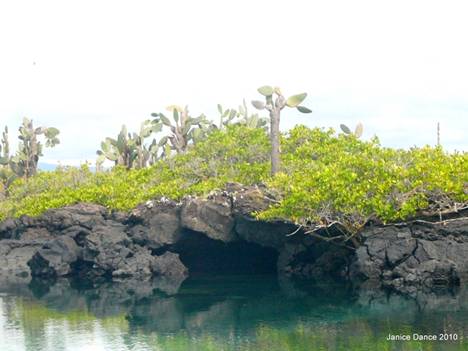

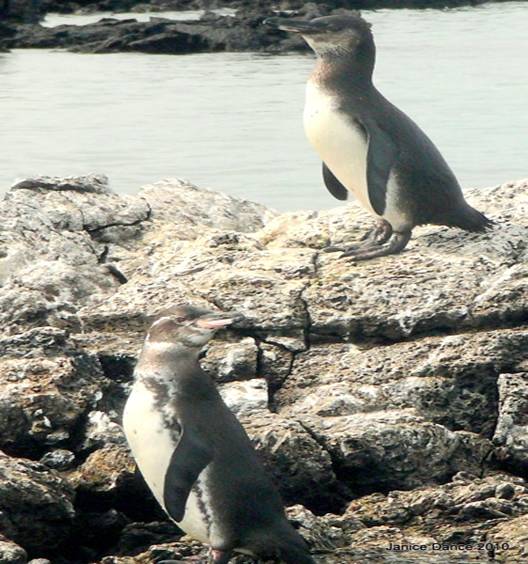
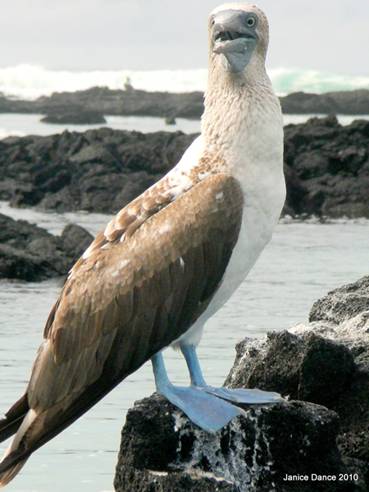
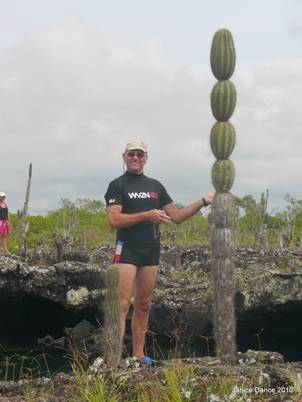
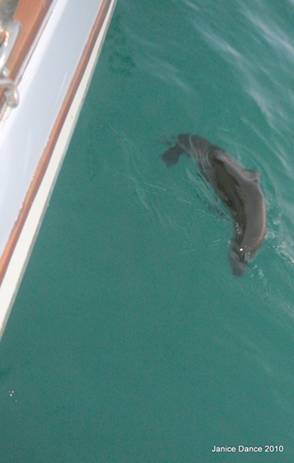 Fabrisio was in the boat and told us to lie down on the
rock edge and peer over. You had to hang out quite
Fabrisio was in the boat and told us to lie down on the
rock edge and peer over. You had to hang out quite 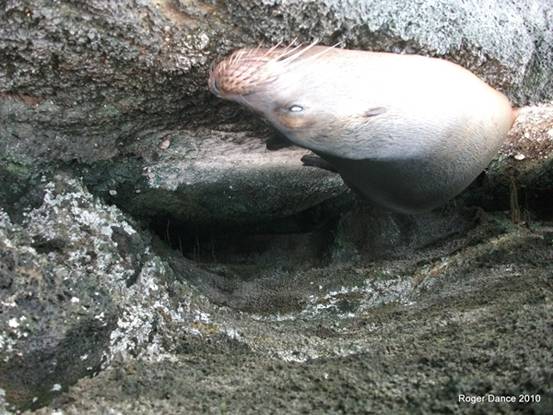 a way to see what he was pointing at, then suddenly, you
came face to face with a sea lion who was resting on a ledge. No he is not
hanging from the roof, that is us taking the photo hanging upside
down!
a way to see what he was pointing at, then suddenly, you
came face to face with a sea lion who was resting on a ledge. No he is not
hanging from the roof, that is us taking the photo hanging upside
down!